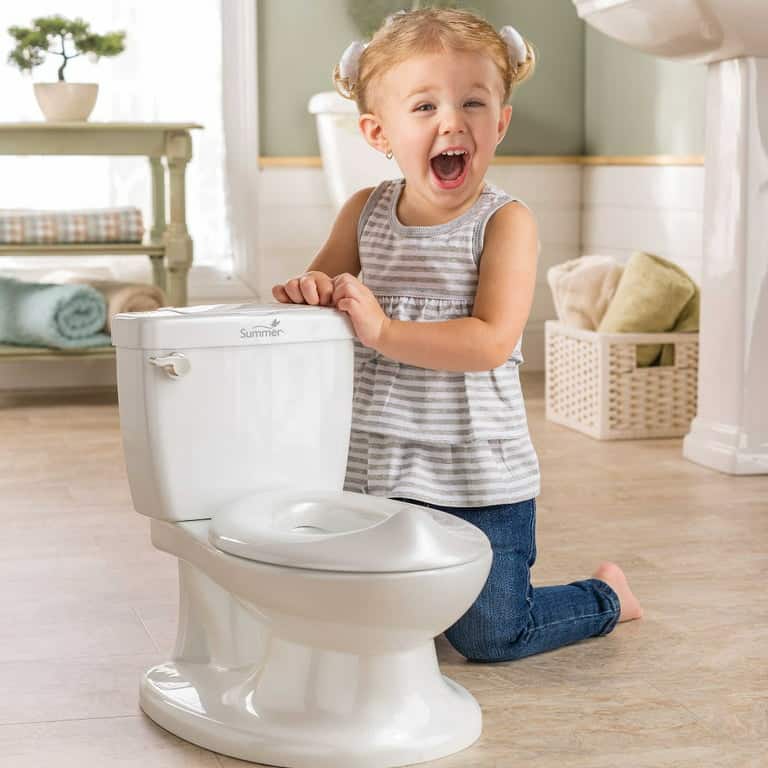The Ultimate Guide to Potty Training Your Toddler with Ease and Confidence
Hey there, super parents! Are you ready to wave goodbye to diapers and welcome the world of underwear? You’re in the right place! Potty training can be a monumental milestone in your toddler’s life, and while it may seem daunting, it can also be a period full of giggles and growth. Let’s journey through the process of potty training together with a sprinkle of patience and a dash of humor!
Understanding the Right Time
Just like the first words or steps, potty training has its own perfect timing. You can’t rush it, and every child blossoms at their own pace. Look out for cues that your kiddo might be ready to start—like showing interest in the bathroom habits of others, staying dry for longer periods, or disliking the feeling of wet diapers. Remember, most children become ready between the ages of 18 and 24 months, but some might not be ready until they’re a bit older, and that’s okay too!
Assembling Your Potty Training Toolkit
Before we embark on this toilet-adventuring quest, let’s get geared up! Gathering the right tools can make all the difference. Start with a child-friendly potty chair or a seat reducer for the regular toilet, making sure it’s stable and comfy. Get a couple of steps stools — one for the toilet, so their feet aren’t dangling, and one for the sink to promote handwashing independence. And don’t forget, an array of cool undies adds to the excitement of transitioning out of diapers!
Setting the Scene for Success
Create a cheerful and positive bathroom environment. A fun potty area, decorated with stickers or their favorite cartoon characters, can make all the difference. Begin with casual potty-sitting sessions to get them familiar with the concept, even if they’re still wearing their diaper. It’s all about getting comfy and reducing any potty-anxiety!
Potty Training Strategies to Try
- The Slow and Steady Method: Introduce potty training gradually, by first incorporating bathroom breaks into your child’s daily routine before transitioning them out of diapers completely.
- The Big Bang Approach: Set aside a few days for an intensive focus on potty training, where you let your little one go without diapers (hello, undies!) and use the potty frequently throughout the day.
- The Praise and Reward Technique: Celebrate each little victory with praise, claps, or even a little potty dance. Small rewards can also reinforce positive behavior and make them feel proud of their achievements.
Expecting the Oopsies
Accidents? They’re part of the package deal in potty training! Keep calm and clean up without fuss. It’s important to reassure your child that it’s perfectly okay and just part of learning something new. Maintain a cheery, no-blame approach, so they don’t associate the potty with negative experiences.
With these first steps, you’re well on your way to taking the potty training plunge! Keep in mind that it’s not just about reaching the destination but also about embracing the journey. Your little one will be using the potty like a pro before you know it, and you’ll be their number one cheerleader through it all. So, ready, set, potty!
Stay tuned for more tips on navigating the ups and downs of potty training, and how to handle the more challenging aspects of this big-kid milestone. It’s a team effort, and you’re doing an amazing job—don’t forget to celebrate the small successes along the way!

Five Essential Tips for Preparing for Potty Training
As you gear up for this adventure, it’s important to be well prepared. Here are five essential tips that will help you and your tot tackle potty training with gusto.
1. Test the Waters with Pre-Potty Training
Begin by introducing your child to potty-related concepts early on. Read them stories about using the toilet, let them watch a sibling or explain what you’re doing when you use the bathroom. This can help them get used to the idea of using a potty.
2. Choose the Right Equipment
Your potty training toolkit should cater to your child’s size and comfort. Some toddlers may feel more secure starting with a potty chair before transitioning to a potty seat that fits on your regular toilet. Additionally, consider a potty that makes music or has characters they love to encourage them to use it.
3. Establish a Routine
Consistency is key. Start by setting regular times to sit on the potty throughout the day, like after meals or before bed. This helps your toddler understand that potty breaks are a normal part of their daily schedule.
4. Dress for Success
Opt for clothing that is easy to take off quickly, such as elastic waistbands or pants with no buttons or snaps. Being able to undress themselves can help your child get to the potty in time and foster independence.
5. Create a Potty-Friendly Space
Make the bathroom a pleasant place where your child feels comfortable spending time. Decorate the area together with bright colors or fun potty charts and keep a basket of books or small toys nearby to help your little one relax during potty time.
Embracing the Potty Training Adventure
View potty training as an exciting new chapter rather than a chore. With the right mindset, preparation, and tools at your disposal, this can be a time of bonding and learning for you and your toddler. Enjoy the process and remember that with each small step, you’re helping them become more independent and confident. Happy potty training!
And don’t worry, we’ve got plenty more advice on the horizon. From dealing with resistance to transitioning to big kid underwear, we’ve got all the insights you need for a smooth sailing potty training voyage.
See more great Things to Do with Kids in New Zealand here. For more information see here
Disclaimer
The articles available via our website provide general information only and we strongly urge readers to exercise caution and conduct their own thorough research and fact-checking. The information presented should not be taken as absolute truth, and, to the maximum extent permitted by law, we will not be held liable for any inaccuracies or errors in the content. It is essential for individuals to independently verify and validate the information before making any decisions or taking any actions based on the articles.




